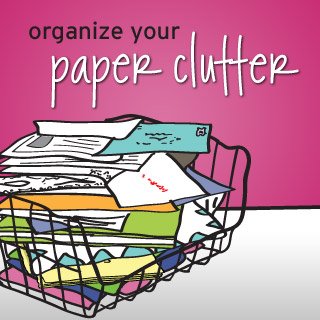5 Proven Strategies to Catch Up on Office Paperwork

The struggle with paperwork is universal in any office environment. Whether you're swamped with overdue tasks, or simply can't find a method to maintain an efficient filing system, catching up on office paperwork can seem like an insurmountable task. However, with the right strategies, you can tackle this beast head-on. Here are five proven strategies to catch up on office paperwork that will help streamline your workflow and reduce the paper chaos:
Prioritize Tasks with the Eisenhower Matrix


The Eisenhower Matrix is a powerful tool for prioritization. Developed by President Dwight D. Eisenhower, this matrix helps you categorize tasks into four quadrants:
- Urgent and Important: Tasks that need immediate attention. These are usually time-sensitive.
- Important, Not Urgent: Tasks that contribute to long-term goals and personal development.
- Urgent, Not Important: Tasks that need to be done but can often be delegated.
- Neither Urgent nor Important: Tasks that may not need to be done at all, or can be put off indefinitely.
By implementing this strategy, you can:
- Focus on what truly matters.
- Reduce stress by eliminating low-value activities.
- Increase productivity by handling urgent and important tasks first.
Batch Similar Tasks


Batching is the process of grouping similar tasks to work on them consecutively. Here's how to apply this to paperwork:
- Set aside dedicated time blocks for filing, reviewing documents, or processing reports.
- Use the same tools or systems for these batches, reducing the cognitive load of switching between different tasks.
- Avoid context switching, which can significantly reduce efficiency and increase the time required to complete paperwork.
This strategy can:
- Improve focus and concentration on one type of task at a time.
- Reduce the time wasted in getting set up for each individual task.
Implement the Two-Minute Rule


David Allen, in his book "Getting Things Done," introduced the Two-Minute Rule. The rule is simple:
- If a task can be done in less than two minutes, do it now.
Applying this to paperwork:
- Quickly respond to simple emails or sign documents.
- File documents immediately rather than letting them pile up.
- By clearing these quick tasks, you'll have more space and mental clarity for bigger projects.
The two-minute rule helps:
- Minimize procrastination on small tasks.
- Reduce the accumulation of paperwork.
Go Digital Where Possible


One of the best ways to reduce paper clutter is to transition to digital:
- Use document management systems like Dropbox or Google Drive for file storage.
- Employ electronic signatures with tools like DocuSign or Adobe Sign.
- Set up automatic workflows or use project management tools like Asana or Trello to track paperwork progress.
Here are the advantages:
- Instant access to documents from any location.
- Reduce the need for physical space to store papers.
- Improve searchability and organization of documents.
Systematic Filing and Regular Audit


Even with digital solutions, some paper will remain. Here's how to manage it:
- Develop a consistent filing system (by date, client, project, etc.).
- Schedule regular time to audit your files, purging outdated or unnecessary documents.
| Monthly Filing Audit Checklist |
|---|
| 1. Remove old or redundant files. |
| 2. Ensure documents are in their correct places. |
| 3. Check for unauthorized documents or duplicates. |
| 4. Review access rights to digital files. |
| 5. Update any procedural changes in document management. |

Regular audits can:
- Ensure easy retrieval of documents when needed.
- Help to keep the physical office space organized.
- Identify any systemic issues in document handling.
🏢 Note: Always ensure you comply with legal and regulatory retention periods for documents before discarding them.
By now, you have a solid arsenal of strategies to streamline your office paperwork. Prioritizing with the Eisenhower Matrix, batching similar tasks, employing the Two-Minute Rule, transitioning to digital, and conducting regular filing audits can transform a chaotic workspace into an organized, efficient hub. Remember, the key is consistency and integration of these methods into your daily work routine. As you apply these tactics, you'll find your productivity soaring, stress levels decreasing, and your desk becoming a model of organization.
Can I use all these strategies together?

+
Yes, these strategies are complementary. Integrating them can create a powerful system for managing paperwork.
What if my organization mandates a paper-based system?

+
Focus on the other strategies like the Eisenhower Matrix, batching, and regular audits. Also, you might advocate for digital solutions if they can be applied selectively.
How do I know which documents to go digital with?

+
Start with documents that are frequently accessed or shared. Legal or sensitive documents might require more thought due to security concerns.



